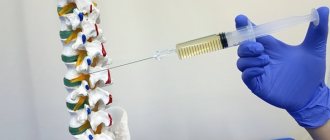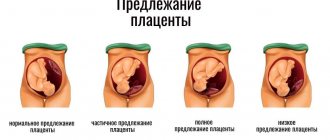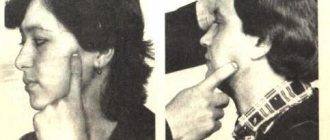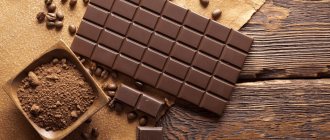Dental calculus is one of the most common pathologies. According to statistics, more than 65% of adults have it. Tartar should not be treated only as an aesthetic defect.
In addition to causing bad breath, tartar is the cause of many dental diseases and promotes infection in the body. Therefore, it is necessary to prevent stone formation, and if it forms, immediate treatment by a dentist.
What is tartar
Tartar is a hard, calcareous deposit on the surface of the tooth that is yellowish to dark brown in color. Initial plaque consists of food debris, dead cells, mucus and microorganisms. The stone is formed when soft plaque accumulates and thickens, and its gradual mineralization with calcium, phosphorus and iron salts. First, it forms in places where plaque accumulates the most: in the gingival zones, in the tooth sockets and in the interdental space. Most often on the inside of the dentition, where there is a hard-to-reach area for brushing teeth and the exit of the salivary gland canals. As the process progresses, it can cover the entire visible surface of the tooth and go under the gums.
It's all due to poor hygiene
Hard plaque is a special mineralized film that consists of many microbes. Poor daily brushing leads to their proliferation and promotes the growth of a soft, invisible film on the teeth. It, under the influence of microflora, begins to actively mineralize within fifteen hours.
Mineralization is completed after 7 days, and after 6 months full-fledged stones appear on the bone formations. The outer protective shell of the coronal part of the tooth, which is overgrown with plaque, begins to darken, but this is not the only negative aspect: hardened plaque (dental deposits) is the main infectious center and becomes the basis for the appearance of a number of diseases, which cause many troubles, including tooth loss.
Thus, cleaning hardened plaque is not only a hygienic aspect. This procedure can be called tooth-preserving, and competent treatment at the dentist is rarely complete without it. Before: replacing a lost or irreversibly damaged tooth with an artificial implant; installation of orthodontic braces; whitening or other procedures, the specialist carefully removes the stones so that the procedure leads to a positive result.
Tartar
How quickly does a stone form?
The rate of stone formation varies from person to person and depends on hygiene skills and factors contributing to stone formation. In the absence of brushing your teeth, within a few hours after eating, a thick film of a huge number of bacteria feasting and multiplying on food debris forms on the surface of the tooth. After a week, the film thickens due to mineralization processes. On average, it takes about 4–6 months to form a dense stone. Therefore, a preventive examination by a dentist is necessary at least once every six months.
Tartar removal – cost of the procedure
The cost of cleaning teeth from hard plaque is significantly influenced by the price range of the dental clinic. Modern equipment and the professionalism of a qualified doctor, but you pay for a safe procedure with high-quality products. Also, the final cost depends on the severity of the work and its volume.
It happens that it is not possible to limit oneself to classic cleansing and it is necessary to treat inflammatory processes on the gums, clean the space between the gum and the tooth root, etc.
To clean your teeth from hardened plaque you need to have at least $40. Your doctor will tell you the final cost during your consultation.
Remember that for such a nominal fee you will receive a perfect smile and clean teeth that will delight you with your health.
Symptoms
Signs of tartar:
- using a mirror you can see dark deposits on the teeth near the gums (mostly on the inside), which do not disappear after hygiene procedures;
- darkening of tooth enamel;
- constant bad breath;
- bleeding gums when brushing teeth;
- increased gum sensitivity;
- deepening and widening of gum pockets, exposure of tooth roots.
Only supragingival plaques can be seen visually; subgingival formations are diagnosed by a doctor.
Laser technique
Cleaning the tooth surface occurs without contact. The action of the device concerns exclusively dental plaque - neither the external nor the internal protective crown part of the tooth is affected. The principle of operation of the device is that it acts on liquid substances. The laser destroys tartar with its beam, and a stream of air and water entering the cavity washes out even the smallest particles of solid deposits.
This technique is distinguished by its effectiveness and safety, but it is not so popular due to its inflated price.
Is it painful to remove tartar ? No, modern treatment methods make it possible to carry out the procedure and make it absolutely painless.
Why is tooth stone dangerous?
In addition to an aesthetic defect, tartar is a common cause of a repulsive putrid odor from the mouth. In addition, stone formation can provoke the development of severe dental diseases:
- caries;
- gingivitis;
- periodontitis;
- tooth loss.
The presence of stone deposits reduces the local immunity of the oral cavity, which increases the proliferation of bacteria and aggravates the manifestation of their pathogenic properties. The consequence of the activity of bacteria is the destruction of tooth enamel and the development of various inflammatory processes in the oropharynx. Subgingival stones destroy the connection between teeth and bone, causing them to loosen and fall out. With severely advanced processes, it is no longer possible to stop tooth loss.
Proper brushing of teeth to remove plaque
Bass technique has been developed to remove food debris from the gum area. It is performed according to the following algorithm:
- Apply paste to brush
- Rinse your mouth with water
- Position the brush parallel to the teeth
- Slightly tilt the brush approximately 45 degrees.
- Move the device without pressing
- Then move in a circle, trying to get the bristles between the teeth
- Go over the entire jaw 15-20 times
- Move in a circular motion along the side teeth
- Do not ignore your tongue; 80% of pollution accumulates on it.
- Remove plaque from tongue
- There are brushes with a rough or bumpy back wall, specially made for cleaning this organ.
- After the outer part is completed, it is necessary to move on to the back wall of the incisors and molars. To do this, the brush is placed vertically with its bristles.
- It is recommended to carry out the procedure near a mirror to see the correctness of your actions.
As you can see, problems in the oral cavity and teeth occur in most cases due to non-compliance with hygiene rules.
Residues of food and the accumulation of bacteria on them create a plaque that hardens over time and cannot be removed by regular cleaning.
This is not only an aesthetic defect, but also serves as the basis for the development of dangerous diseases.
Brushing your teeth twice a day and regular dental check-ups will help reduce the risk of formations.
Causes of tartar
The formation of tartar is a consequence of:
- insufficient or improper oral hygiene;
- disorders of mineral metabolism in the body, which is often associated with the presence of chronic diseases or genetic predisposition.
Factors that contribute to the formation of tartar, subject to insufficient hygiene, include:
- defective position of teeth;
- roughness of the tooth surface, often due to the installation of low-quality filling material or insufficient polishing;
- presence of braces and dentures.
- preference in the diet for soft and carbohydrate foods;
- one-sided chewing;
- smoking;
- alcohol abuse;
- hypersalivation (secretion of large amounts of saliva);
- a general decrease in the body’s immunity and the presence of foci of chronic infection.
How to remove tartar in dentistry
Tartar is removed in a dental clinic using modern techniques that allow the stone to be completely destroyed. The earlier deposits are detected, the easier it is to remove them.
The procedure takes about an hour in total. First, the doctor removes the supragingival stone, and, if necessary, the subgingival stone. Then the teeth are polished and a fluoride toothpaste is applied.
In their work, dentists usually combine several methods of stone removal. This approach allows you to get the most effective results. Once the problem is eliminated, the risk of complications is significantly reduced.
Smokers' tartar
There are practically no heavy smokers who do not have tartar. Tar from tobacco smoke and soot deposit a yellow coating on tooth enamel. It is easier for food debris to stick to this plaque and for bacteria to multiply comfortably. Gradually, under the influence of both saliva and tobacco smoke, various salts are deposited in plaque and brown tartar is formed. In addition, tobacco smoke contains toxic substances and heavy metals, which trigger the process of detachment of the gingival margin from the teeth. Food is stuffed into the deep gaps and optimal conditions are created for the growth of colonies of pathogenic bacteria. A regular toothbrush does not sweep out pathological contents from such pockets. And bacteria eat away the connective tissue between teeth and bone, exposing their roots. A dangerous inflammatory disease – periodontitis – gradually develops. Tartar deposited under the gum does not give a chance for self-healing, but turns the disease into a chronic form. Combined with the effects of tartar and destruction of the connective tissue that anchors the teeth, the process of development of periodontitis in smokers proceeds 3 times faster than in non-smokers. This leads to rapid tooth loss. According to statistics, 80-year-old smokers have 2.5 times fewer teeth than non-smokers.
Why does it appear?
The main cause of any problem is insufficient hygiene. If you regularly cleaned your mouth poorly, did it with the wrong brush, or used a low-quality paste, then expect the formation of not only hardened plaque, but also destruction of hard tooth tissue, and other equally dangerous diseases. To avoid adverse effects, choose the right brush and toothpaste, also follow the correct technique for brushing your teeth and be sure to rinse and floss your mouth after eating.
The accelerated appearance of hardened plaque causes:
- Hobbies for confectionery, carbonated drinks, foods rich in simple carbohydrates;
- Frequent consumption of soft or liquid foods, food fillers and flavored sweeteners;
- Poor diet;
- Drinking alcoholic beverages and smoking;
- Heavy secretion of saliva;
- Taking a number of pharmacological drugs;
- Chronic inflammatory diseases.
Prevention of stone deposits
Prevention of any disease is always cheaper than its treatment. This applies not only to the financial component, but also to the temporary and psychological component.
The most important thing in preventing dental diseases is proper oral hygiene.
How to brush your teeth
To prevent the formation of tartar, learn how to brush your teeth correctly:
- Movements when brushing your teeth should be “sweeping”, in the direction from the gums to the edge of the tooth.
- First brush your front teeth, then carefully treat the inner surface of the dentition.
- The chewing surface is cleaned with back-and-forth and circular movements. Don't forget about your wisdom teeth.
- The duration of cleaning should be at least 3 minutes. To do this, it is convenient to have an hourglass in the bathroom or to clean while listening to a certain musical composition.
- Brush your teeth at least twice a day. The first time is after breakfast, the second time after dinner. If you are prone to the formation of stones, brush your teeth additionally after each meal.
Choosing a toothbrush
Not everyone knows how important it is to choose the right brush. Listen to the experts:
- Choose a high-quality, medium-hard toothbrush, preferably with rubber blades, which increase the effectiveness of removing plaque and polishing teeth.
- Soft brushes are only suitable for children or during periods of bleeding and sore gums.
- Hard brushes can be used 1 or 2 times a week. They should not be used in places where the necks of the teeth are exposed, especially if the sawing cleaning is improper. This contributes to the formation of wedge-shaped defects.
- Don't forget to change your brush every month.
Interesting experiment!
American doctors conducted an experiment, the participants of which were divided into 5 groups.
The first group: brushed their teeth with regular brushes and expensive toothpaste for 1 minute.
Second group: brushed their teeth with regular brushes and expensive toothpaste for 5 minutes.
Third group: they brushed their teeth with regular brushes and cheap toothpaste for 5 minutes.
Fourth group: they tried to brush their teeth without a brush, by rubbing expensive toothpaste with their fingers.
Fifth group: brushed their teeth with regular brushes without toothpaste, but for at least 5 minutes.
The experiment lasted a week. Every day after the procedure, the cleanliness of the teeth was measured.
At the end of the week there were the following results (the more stars, the cleaner the teeth):
| Group number | Brushes | Paste | Cleaning time | Result |
| 1 | Regular | Expensive | 1 minutes | Bad result |
| 2 | Regular | Expensive | 5 minutes | Excellent result |
| 3 | Regular | Cheap | 5 minutes | Excellent result |
| 4 | Without brushes | Expensive | 5 minutes | No result |
| 5 | Regular | Without paste | 5 minutes | Good result |
Conclusion: it turned out that when brushing your teeth, the toothbrush and the time spent on the procedure are important. You can brush your teeth even without toothpaste; it will be much more effective than using toothpaste without a brush. And if you clean it correctly, there is almost no difference between expensive or cheap toothpaste.
Other hygiene rules
- For continuous use, use only therapeutic and prophylactic pastes from well-known companies. For people prone to the formation of stones, it is useful to periodically brush their teeth with abrasive whitening pastes, for example, 2 times a week.
- After each meal, thoroughly rinse your mouth with special elixirs, and if you don’t have them on hand, you can use plain water.
- Use floss (special thread) to remove plaque between teeth. Floss is used both after brushing your teeth and without it in the afternoon. However, do not make cutting movements (back and forth), so as not to damage the gums, the movements should be: up and down.
- After brushing your teeth, use special devices - irrigators, which, under the pressure of a stream of water, will clean all places that are difficult for a brush to reach from bacteria and food, and improve blood circulation in the gums and dental pulp. In addition, you can polish your teeth with a special irrigator attachment, then it will be more difficult for the stone to be deposited on smooth enamel. Today, irrigators are recognized by dentists as one of the most effective ways to prevent tartar.
- Quit smoking completely. Or, at worst, use electronic cigarettes, the vapor of which does not contain toxic substances and resins involved in the formation of stones.
- Get a preventive examination from your dentist at least once a year, and more often if indicated.
- Have your teeth professionally cleaned periodically.
How to remove tartar on your own?
Removing small stones yourself is possible, but you will need to soften them and then take a long time and painstakingly brush them off with a toothbrush. So, use the following methods:
- Boil the walnut peel in water, then immerse a toothbrush with stiff bristles in the broth. After a while, apply toothpaste with an abrasive effect to the brush and rub the stones for a while, then rinse your mouth with water.
- A mixture of radish and lemon is also very effective - it softens tartar well. Mix grated radish with lemon pulp, chew and spit out, and then rinse your mouth.
- You can remove stones from your teeth using a mixture of alum, turmeric and ginger with sea salt.
- Tea tree oil is good for removing stone at home - add it to toothpaste and brush your teeth. This mixture removes plaque perfectly!
- You can remove stones from your teeth using natural honey dissolved in ordinary boiled water. This method is good for small deposits.
- Using regular table salt also helps a lot. Simply soak a soft toothbrush in water and dip it in salt, then gently massage your gums and brush your teeth.
Such treatment lasts more than one month, and the procedures must be daily.
Ultrasonic toothbrushes
Recently, a new gadget has appeared on the market - an ultrasonic toothbrush. In addition to mechanical cleaning, this brush provides ultrasonic treatment of hard-to-reach areas of the tooth and gums to a depth of up to 4 mm. Ultrasonic waves destroy bacteria and effectively remove pigmentation and deposits when mineralization begins. However, such a brush cannot remove formed tartar; this can only be done by a specialist using professional equipment. In addition, the use of an ultrasonic brush is effective and safe only for people with absolutely healthy teeth.
Symptoms
The main symptoms are associated with the occurrence of an inflammatory process in the gums. It is important to note that deposits do not cause pain, but when a large amount of deposits forms, a traumatic situation arises for the gums.
There are several symptoms by which it is possible to distinguish the appearance of tartar:
- the occurrence of an unpleasant odor as a result of the harmful activity of microorganisms that accumulate on the teeth;
- swelling of the gums. The predominance of a bright red tint, enlarged dental papillae, bleeding when brushing or eating, sometimes painful sensations appear;
- Increased sensitivity appears due to recession of the gums of the teeth. As a result, the roots begin to become exposed and the susceptibility to consuming hot or cold food and drinks increases;
- Due to the dark brown or yellow tint of the deposits, the overall aesthetic appearance of the smile is spoiled. Many people begin to experience complexes or stop smiling.
If such symptoms occur, it is recommended to seek help from a professional dentist.
Contraindications to ultrasonic brushes
Due to the presence of ultrasonic microvibration, the use of such brushes is not recommended for persons:
- with veneers, fillings and crowns, as their service life is reduced;
- with areas of loose and porous enamel, due to the fact that the development of the carious process accelerates due to the destruction of defective enamel;
- with gingivitis and periodontitis, due to the increased spread of infection by hematogenous route;
- with periodontal disease, as the process of bone destruction accelerates;
- having precancerous changes and cancer, due to the acceleration of the division of atypical cells.
These significant drawbacks significantly limit the use of ultrasonic brushes, since almost 95% of the adult population have certain problems. It is also not recommended to use any power brushes during pregnancy or for people with pacemakers.
Treatment methods
How to treat tartar often depends on the degree of complexity of each clinical case and includes the following procedure:
- complete elimination of deposits during hygiene measures in the dental office;
- if necessary, new fillings are placed;
- orthodontic treatment to eliminate additional areas where tartar constantly appears due to improper alignment of the dentition;
- The treatment procedure and elimination of plaque involves several measures: the removal of tartar from the tooth, the oral cavity is treated with a special antiseptic, and the surface is polished.
In some cases, treatment or removal occurs manually or using a special device (ultrasonic scaler). As for hand tools, these include the following:
- scaler. The instrument needed to remove a supragingival tooth comes in straight and curved shapes;
- an excavator is used for large stones;
- the chisel is used to break out “Bridges” on frontal surfaces;
- A curette is a specific instrument that helps get rid of subgingival stone;
- The rasp helps scrape off surfaces that have not yet hardened.
Dentists most often use ultrasonic scalers to spend a minimum of time cleaning stones during a professional procedure. A distinctive feature is cavitation - the collapse of air bubbles in a liquid accompanied by hydraulic shock. Vibration occurs upon contact with a tooth. In this case, soft tissues are not damaged or injured.
Cleaning with ultrasound in close contact with the enamel; chemical etching of hard dental deposits is first used. The coating consists of alkaline and acidic solutions, which makes it possible to lighten the mass of deposits.
Work with an antiseptic is carried out by irrigation with a solution at a concentration of 0.05 chlorhexidine. Innovative scalers have a built-in supply of chlorhexidine. Universal tools supply water.
At the final stage, the tooth surface is polished, which reduces the likelihood of soft plaque deposits. The process uses rubber cups and brushes with low-abrasive paste.
Hardware ultrasonic cleaning.
This is the most popular and effective way to remove mineral deposits. Ultrasonic waves break up tartar and easily remove it from the enamel surface. Moreover, such cleaning has an antiseptic effect and is therefore also indicated for gum inflammation. If the stone formation is very dense, before the cleaning procedure, means are used to soften it, then ultrasonic removal of deposits is carried out. During ultrasonic cleaning in the area of the neck of the lower incisors, when the roots are exposed, there may be mild pain. Then, at the request of the patient, local anesthesia is applied.
Despite the presence of many contraindications for the use of ultrasonic toothbrushes, the use of ultrasonic cleaning when removing stone is necessary. First, the dentist will use visual guidance to avoid areas of thinned, porous enamel. Secondly, one-time professional cleaning does not have as negative an effect on fillings as twice-daily brushing.
Laser cleaning.
The newest non-contact method of removing hard dental deposits is highly effective and absolutely painless. However, the price is much more expensive than ultrasonic. Laser cleaning has the same contraindications as ultrasonic cleaning.
Air-flow
Refers to mechanical methods. A jet of air with a therapeutic abrasive mixture is supplied under pressure, which removes both soft plaque and hard deposits. The gum area may tingle during the procedure. It is less effective than ultrasonic and laser cleaning.
Manual method
Mechanical manual method of beating stones using special tools. Currently, it is outdated due to the painfulness of the procedure, the presence of complications and the emergence of more effective methods. It is used free of charge under the compulsory medical insurance policy in public hospitals or as an additional method of treatment if indicated. Due to the painfulness of the procedure, especially when removing subgingival stones, local anesthesia is performed. It is a relative contraindication for periodontitis due to high trauma.
What types of formations are there?
Is it possible to remove tartar ? It all depends on its type. Hardened dental plaque contains organic and inorganic components. About thirty percent of the components are organic: microorganisms, protein, etc., and inorganic components include calcium salt.
Hard plaque is classified according to where it accumulates. Separate the stones:
- Above the gums. They can be noticed when smiling; the shade of such plaque is dark or yellow. Removed quickly.
- Under the gums. They form under the gum and are therefore difficult to notice with the naked eye. The tooth looks completely healthy.
As a rule, such formations can be seen if you look at the gums - hard plaque makes them turn blue, swelling and bleeding appear. Stone in the space between the gum and tooth root can cause minor local suppuration.
Noticeable hardening signals a lack of hygiene, and subgingival formations are associated with a disruption of the connection between bone formation and gums, which destroys all tissues. Formations under the gum can only be detected by a dentist using special instruments. Finding them and removing them is a very difficult task, which not every specialist can handle.
If you are wondering how much it costs to remove tartar , then the price depends on its type and the complexity of the procedure. The minimum price in the CIS is 20-30 dollars.
After the procedure
At the end of the procedure, regardless of the method of stone removal, the dentist must grind and thoroughly polish the enamel.
Sometimes, at the request of the patient, after cleaning, the teeth are coated with a special protective composition against infection and plaque buildup.
Within 15 days after cleaning:
- Do not use bleaching abrasive pastes;
- the use of toothpastes from the “sensitive” series, based on herbs and with an anti-inflammatory effect, is indicated;
- rinses with astringent and soothing properties are recommended;
- Do not eat spicy foods or dyes;
- categorically give up smoking or at least abstain for this period.
Preventive measures
Hygienic procedures are required to be carried out 2 times a day. Cleaning is carried out on the inside and outside of the teeth. Additionally, after each meal you need to use dental floss or irrigator. A rinse aid with a disinfectant effect helps reduce the likelihood of deposits forming.
.
Are there any traditional methods for removing stones?
There are no home methods to remove stones in one procedure, like in clinics. Moreover, with extensive and long-fossilized formations, traditional methods will not help. Grandmother's recipes can only be used when stone formation begins, when the deposits are thick, but still loose and light. In this case, the following will help:
- cleansing teeth with radish pieces;
- It is also useful to eat a salad of grated radish with lemon every day;
- brush your teeth with fresh and already cooled coal ash;
- soften plaque with hydrogen peroxide, then brush your teeth with soda.
It should be noted that the first two methods will definitely not cause harm; they can be safely used, even if they do not help. But the last two options do not have clinical trials and proven effectiveness, and therefore may be unsafe. Therefore, you should not take such dubious and radical measures on your own when dental care is available to everyone.
Removing stones at home
Today you can read various recipes online, following which, it seems, you can cleanse your teeth of unwanted formations without the help of a specialist. In addition to the fact that they will not bring the desired effect, such methods can additionally injure the teeth and cause additional harm to them. The use of soda or mineralized salt is not considered the best folk remedies. Cleaning teeth from stones is the task of professionals in their field. The only thing you can do is to follow preventive measures and prevent stones from appearing.
Contraindications
Contraindications for hardware teeth cleaning include:
- wearing dentures and braces;
- the presence of implants in the body, including pacemakers;
- ARVI, active stage of tuberculosis, HIV infection;
- oncological diseases;
- pregnancy (or with the permission of an obstetrician-gynecologist);
- childhood, until all baby teeth are replaced.
- pregnancy.
Pregnancy is a relative contraindication to dental cleaning. Dental procedures can be performed during a satisfactory pregnancy with the permission of an obstetrician-gynecologist. If there is a threat of miscarriage or other serious conditions, it will be recommended to postpone the removal of stone deposits and the beauty of the smile.







